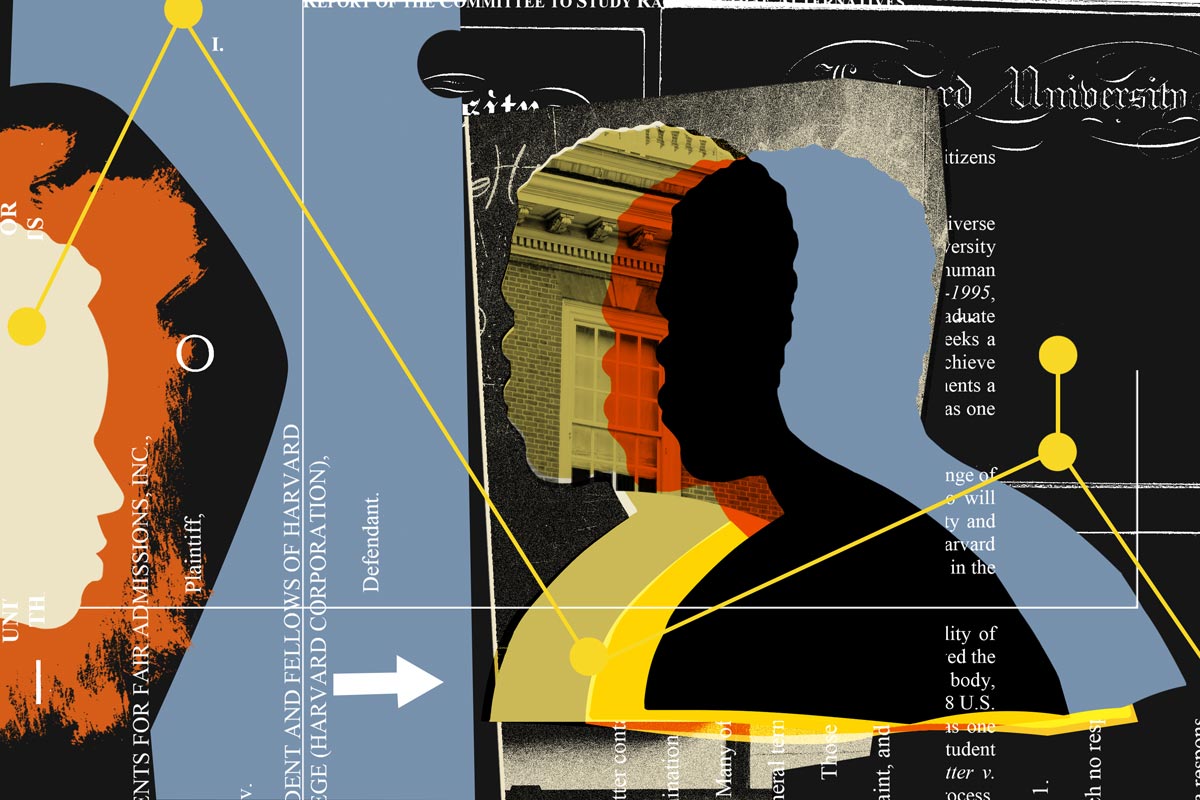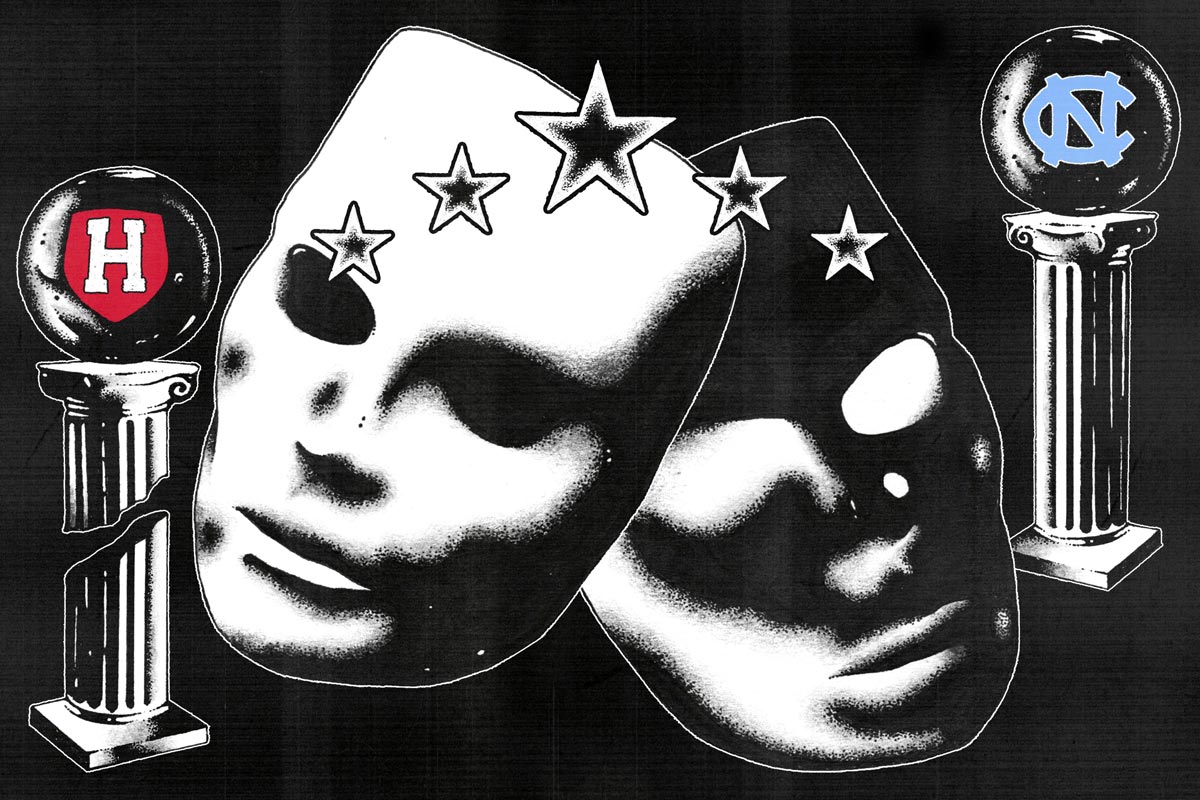THE FIGHT FOR AFFIRMATIVE ACTION
On October 31, the Supreme Court will consider two lawsuits—SFFA v. Harvard and SFFA v. UNC—that target race-conscious university admissions. The outcome is all but certain. The Court’s rightwing majority will ban all universities from considering an applicant’s race. The decision will cap more than fifty years of judicial hostility to antiracist projects that followed the Civil Rights Act of 1964.
This result is itself extreme; it constitutionalizes white racial advantages and legitimizes racial inequality. But the Court’s reasoning is also extreme. To justify a ruling that outlaws modest tools to remedy racism in America, the majority will deploy three of our country’s most racially progressive precedents: The Fourteenth Amendment, Title VI, and Brown v. Board of Education. Through raw power and judicial fiat, the Supreme Court will transform antiracism mandates into commands for colorblindness. This fidelity to colorblindness threatens more than affirmative action. The Supreme Court is poised to deploy the same logic to further gut voting rights, curtail protections for indigenous communities, and outlaw all efforts to remedy racial inequality—even efforts implemented through colorblind means.
Ratified in 1868, the Fourteenth Amendment buttressed a nascent “abolitionist project” to reconstitute America’s racial order. Sitting between the Thirteenth Amendment (which abolished slavery) and the Fifteenth Amendment (which expanded suffrage), the Fourteenth Amendment extended to Black Americans citizenship and the rights and protections guaranteed by the Bill of Rights. Three years’ later, the Supreme Court observed that the three Reconstruction Amendments had “one pervading purpose . . . the freedom of the slave race, the security and firm establishment of that freedom, and the protection of the newly-made freeman and citizen from the oppressions of those who had formerly exercised unlimited dominion over them.” Professor Brandon Hasbrouck explains that for Black Americans, “the Reconstruction Amendments guaranteed their right to establish and protect this new society.” Nearly two centuries later, Justice Thurgood Marshall put it plainly: “While the Union survived the Civil War, the Constitution did not.” Where an anti-democratic and white supremacist document once stood, the guarantee of a multiracial union took its place.
To justify a ruling that outlaws modest tools to remedy racism in America, the majority will deploy three of our country’s most racially progressive precedents: The Fourteenth Amendment, Title VI, and Brown v. Board of Education.
Yet within less than a decade, the Supreme Court usurped the democratic convictions and commitments that had birthed this promise. In the Slaughter-House Cases in 1873, the Court nullified the Privileges and Immunities Clause, which many had viewed as the Fourteenth Amendment’s most important provision because its reference to the Bill of Rights infused into the Amendment rights and liberties essential to full citizenship. Ten years later in the Civil Rights Cases, the Court struck down Congress’ first attempt to prohibit anti-Black discrimination in public accommodations like inns, theaters, and restaurants. To justify the result, the Court rehearsed one of the earliest “reverse racism” claims:
When a man has emerged from slavery, and by the aid of beneficent legislation has shaken off the inseparable concomitants of that state, there must be some stage in the progress of his elevation when he takes the rank of a mere citizen, and ceases to be the special favorite of the laws, and when his rights as a citizen, or a man, are to be protected in the ordinary modes by which other men’s rights are protected.
By 1896, in Plessy v. Ferguson, the Supreme Court further entrenched racial hierarchy when it blessed the “separate but equal” doctrine. Within a single generation after the Civil War, the Supreme Court accomplished what the Confederacy could not: it constitutionalized an afterlife for slavery.
It would take nearly a century for Jim Crow to fall. In 1954, following massive grassroots resistance, geopolitical necessity, and decades of litigation, Brown v. Board chipped away at Plessy and rediscovered the Fourteenth Amendment’s antiracist mooring. But the decision proved ineffectual; a decade after Brown, the South’s commitment to Jim Crow remained unyielding. Congress responded with a suite a civil rights legislation. These laws, which included Title VI, reflected America’s renewed commitment to multiracial democracy and gave teeth to Brown’s promise of a post-apartheid America.
Yet as before, the Supreme Court defused democratic efforts to build a more perfect union. Between 1969 and 1971, President Nixon appointed four justices and reshaped the Supreme Court. Among those justices was Lewis Powell, who had openly opposed state-mandated integration, and William Rehnquist, who had advocated for Plessy as a Supreme Court clerk.
By 1974, the Supreme Court had defanged Brown and neutralized Title VI’s commensurate desegregation mandate. That year, in Milliken v. Bradley, the Supreme Court prohibited lower courts from mandating integration when the underlying segregation occurred across district lines. This holding constitutionalized white flight and other social forces that fuel and entrench racial segregation but lack an identifiable intent to segregate. Lamenting this reality, Thurgood Marshall—who only two decades before had litigated Brown before the Supreme Court—accused the majority of “mak[ing] a solemn mockery” of Brown.
Within a single generation after the Civil War, the Supreme Court accomplished what the Confederacy could not: it constitutionalized an afterlife for slavery.
If Milliken neutralized Brown’s attempt to reinvigorate the Fourteenth Amendment, Regents v. Bakke turned Brown and the Fourteenth Amendment on their heads. Decided in 1978, Bakke comprised the Supreme Court’s first substantive engagement with a remedial race-conscious university admissions program. Many view Bakke as a partial win for affirmative action because it introduced the “diversity rationale”—which multiple Supreme Court majorities have invoked to uphold race-conscious admissions policies.
But reading Bakke as a partial win overlooks how the Court’s majority turned the Fourteenth Amendment into a weapon against antiracism itself. Bakke presented a critical question: What standard of review should apply to remedial race-conscious policies? Five justices (including three of Nixon’s appointees) concluded that strict scrutiny—the most demanding level of review—should apply. The conclusion rendered all race-conscious efforts presumptively suspect—thereby constitutionalizing an equivalence between the Black Codes and Jim Crow, on the one hand, and affirmative action, on the other. The Supreme Court transformed the Fourteenth Amendment and Title VI from antiracism mandates into mandates against antiracism.
In the decades since, the Supreme Court has continued to wield our most racially progressive precedents as weapons of racial retrenchment. The pending admissions cases will further this tradition. The Court is poised to ban all race-conscious admissions policies—even when a historically white university considers race to promote “meritocracy,” counter white racial advantages, or desegregate its campus. The Court will tell us the Fourteenth Amendment, Title VI, and Brown command this result—even as that result is celebrated by the same constellation of interests that protested the Fourteenth Amendment, contested Title VI, and maligned Brown. And when it does, the Supreme Court will accomplish what the longest filibuster in American history failed to do: constitutionalize an afterlife for Jim Crow.
Boston University School of Law Professor Jonathan Feingold’s scholarship explores the relationship between race, law, and the mind sciences. Feingold co-authored an amicus brief on behalf of race-conscious admissions at Harvard and UNC, and his work has been cited in U.S. Supreme Court amicus briefs defending affirmative action.



